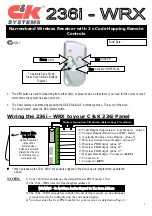Reviews:
No comments
Related manuals for TDFM-136B

ZR-4630 ZR-4630
Brand: Niles Pages: 82

ZR-4630 ZR-4630
Brand: Niles Pages: 82

XCR 30 MARK II
Brand: Barlow Wadley Pages: 11

DJ-G5T/E
Brand: Alinco Pages: 71

GE-PON OLT Transceiver OPEP-33-B4K3R
Brand: Delta Pages: 8

Jaxster 3D HD
Brand: Conrad Pages: 32

IC-M87
Brand: Icom Pages: 10

HDBTBOX-RX
Brand: adstec Pages: 21

PVA81
Brand: Napoleon Pages: 8

236i-WRX
Brand: C&K systems Pages: 7

FIBREDATA Series
Brand: Televes Pages: 4

26 00 75
Brand: Wetekom Pages: 22

DCT 6200 HD
Brand: Seaside Communications Pages: 41

DTR-20.3
Brand: Integra Pages: 92

xepton TRX-1
Brand: AUDIOropa Pages: 88

DS-PM1-I16O2-WA
Brand: HIKVISION Pages: 2

CO10RF
Brand: Salus Pages: 2

Radio-To-Intercom Bridge RIB-600Analog
Brand: Ritron Pages: 36

















